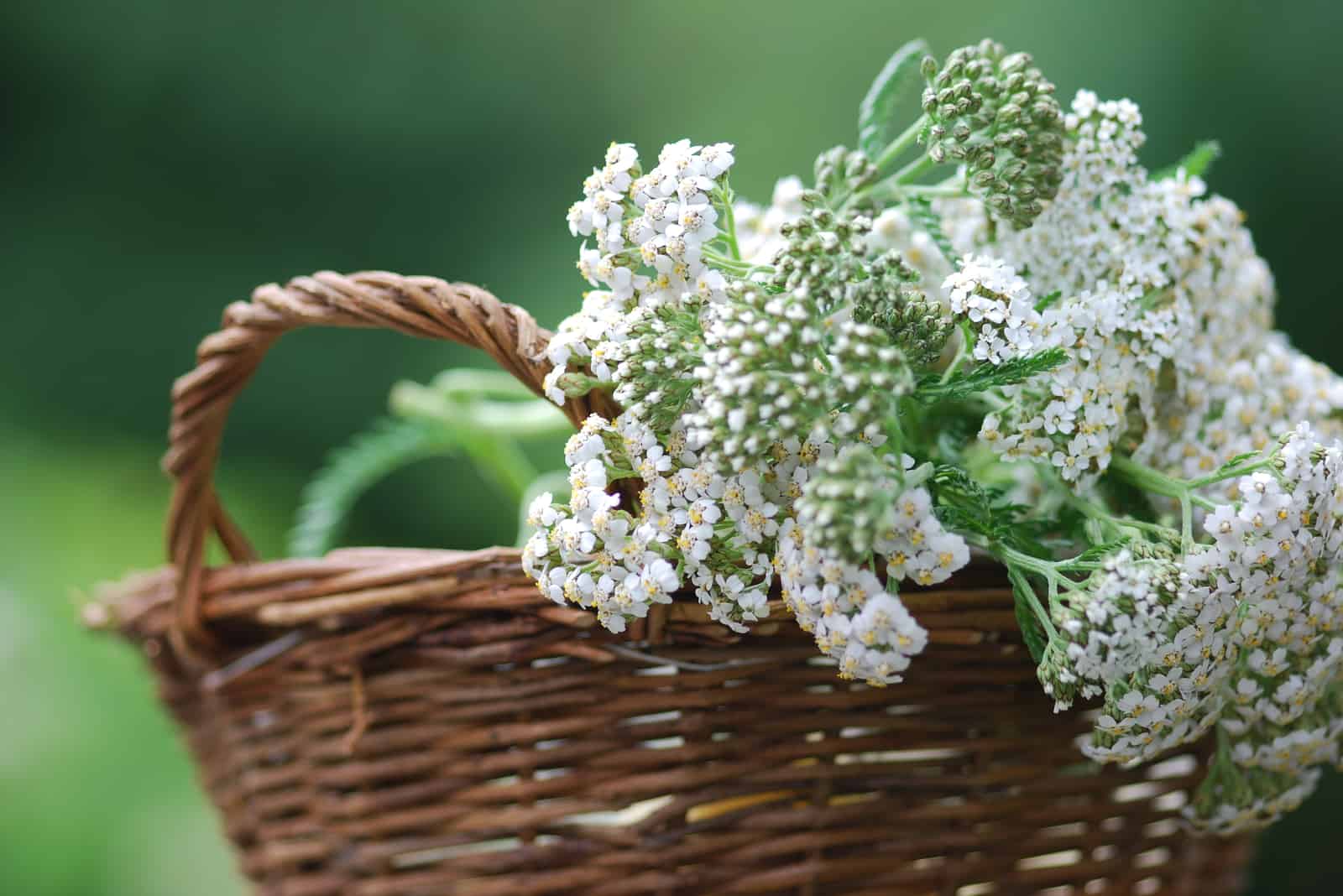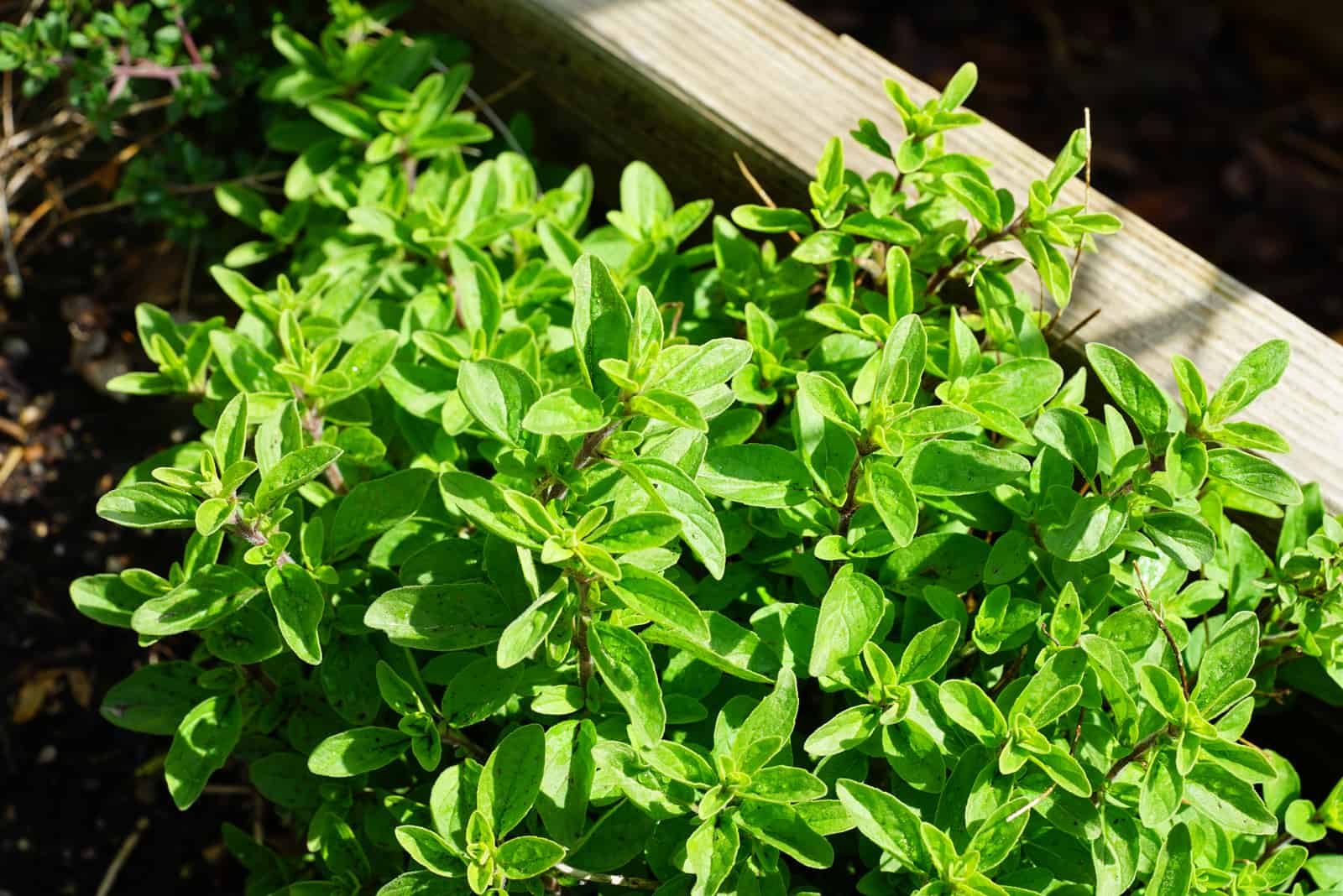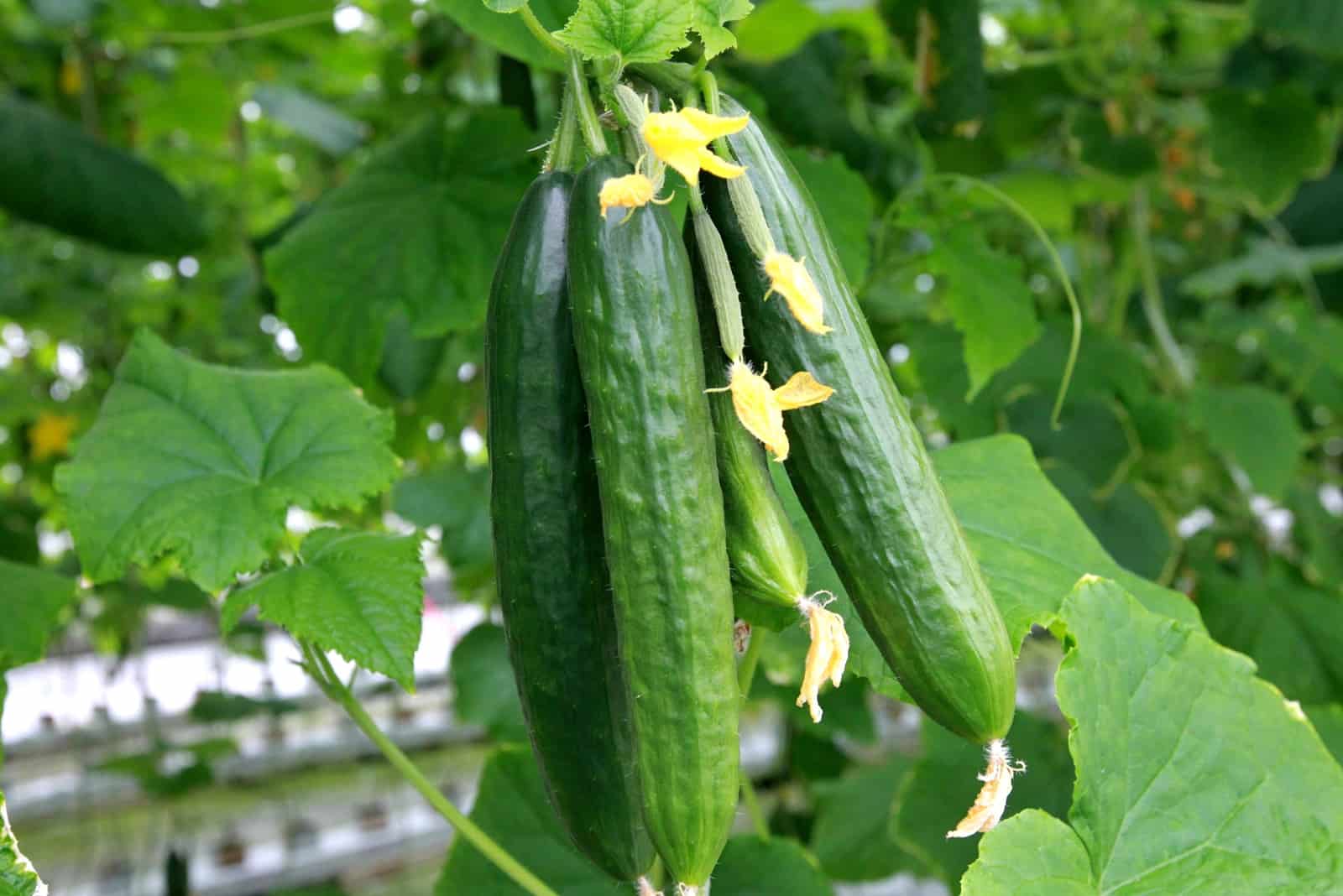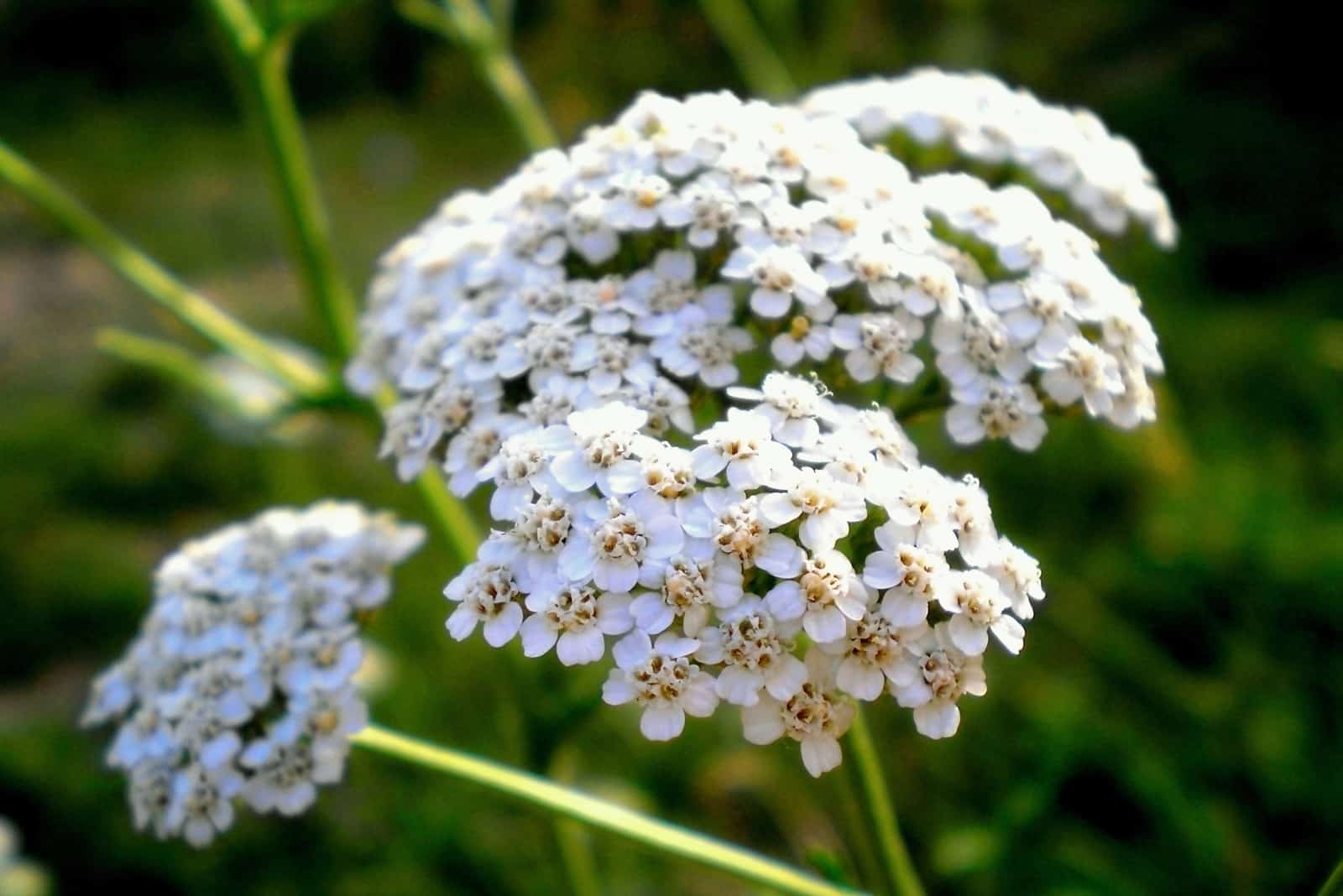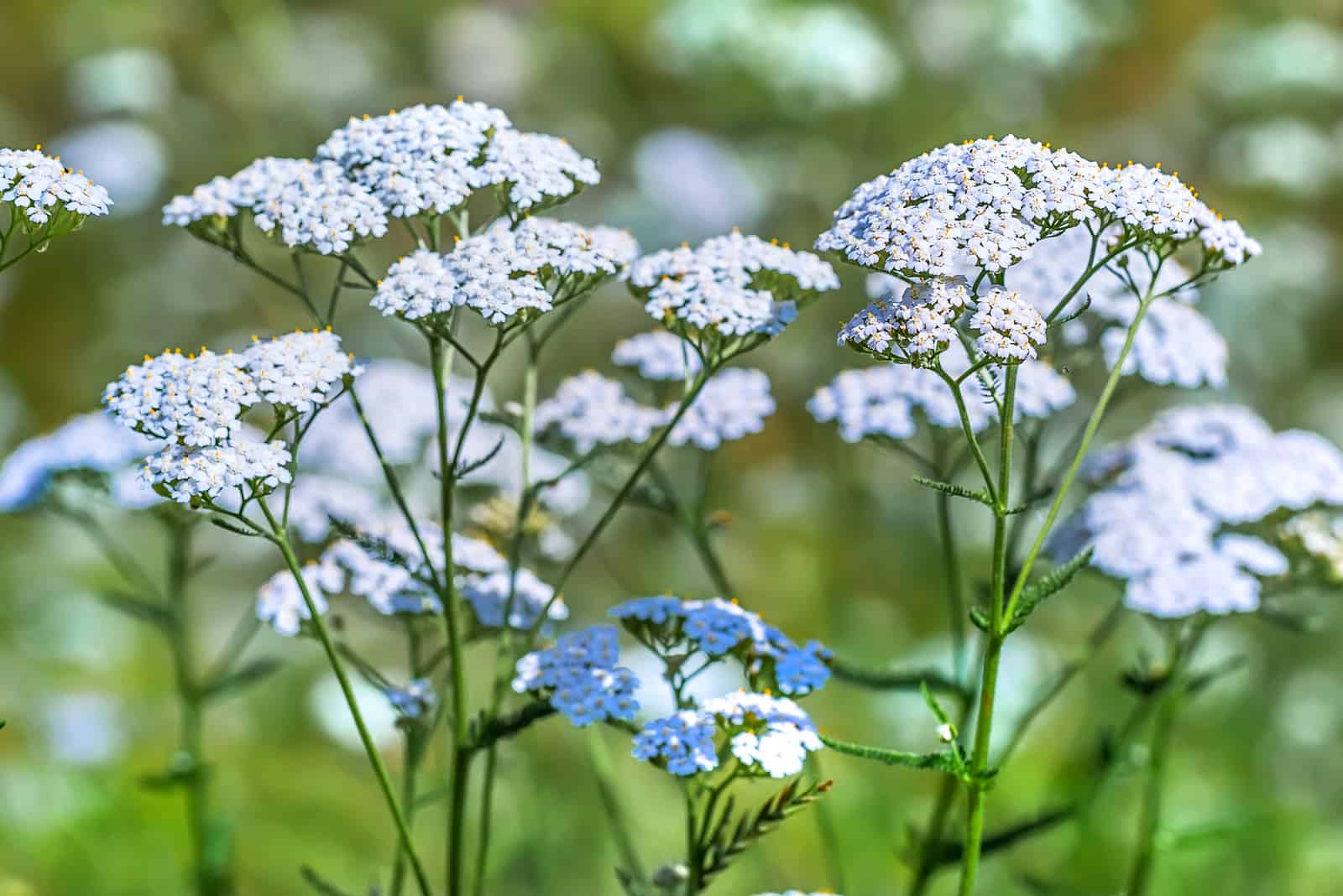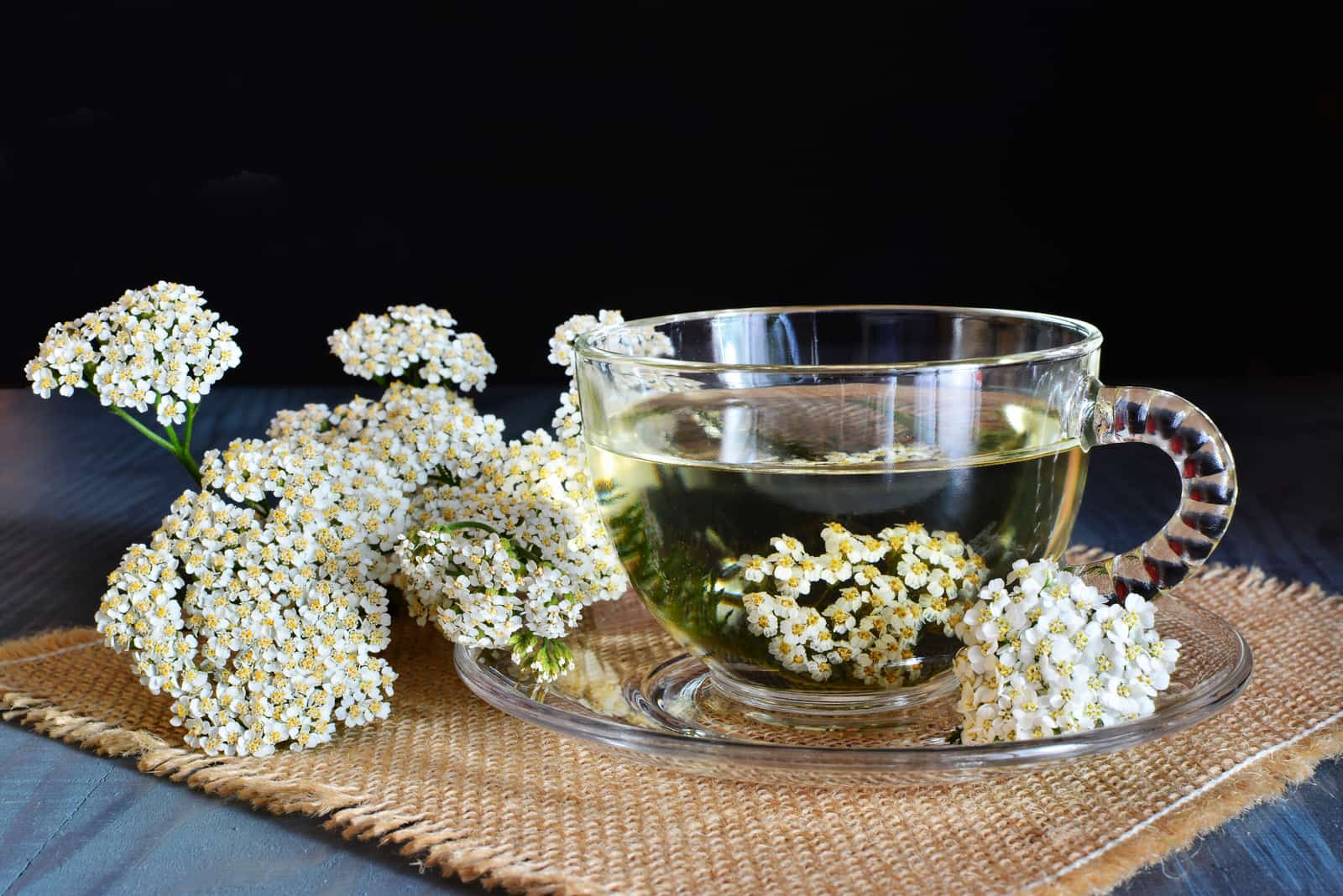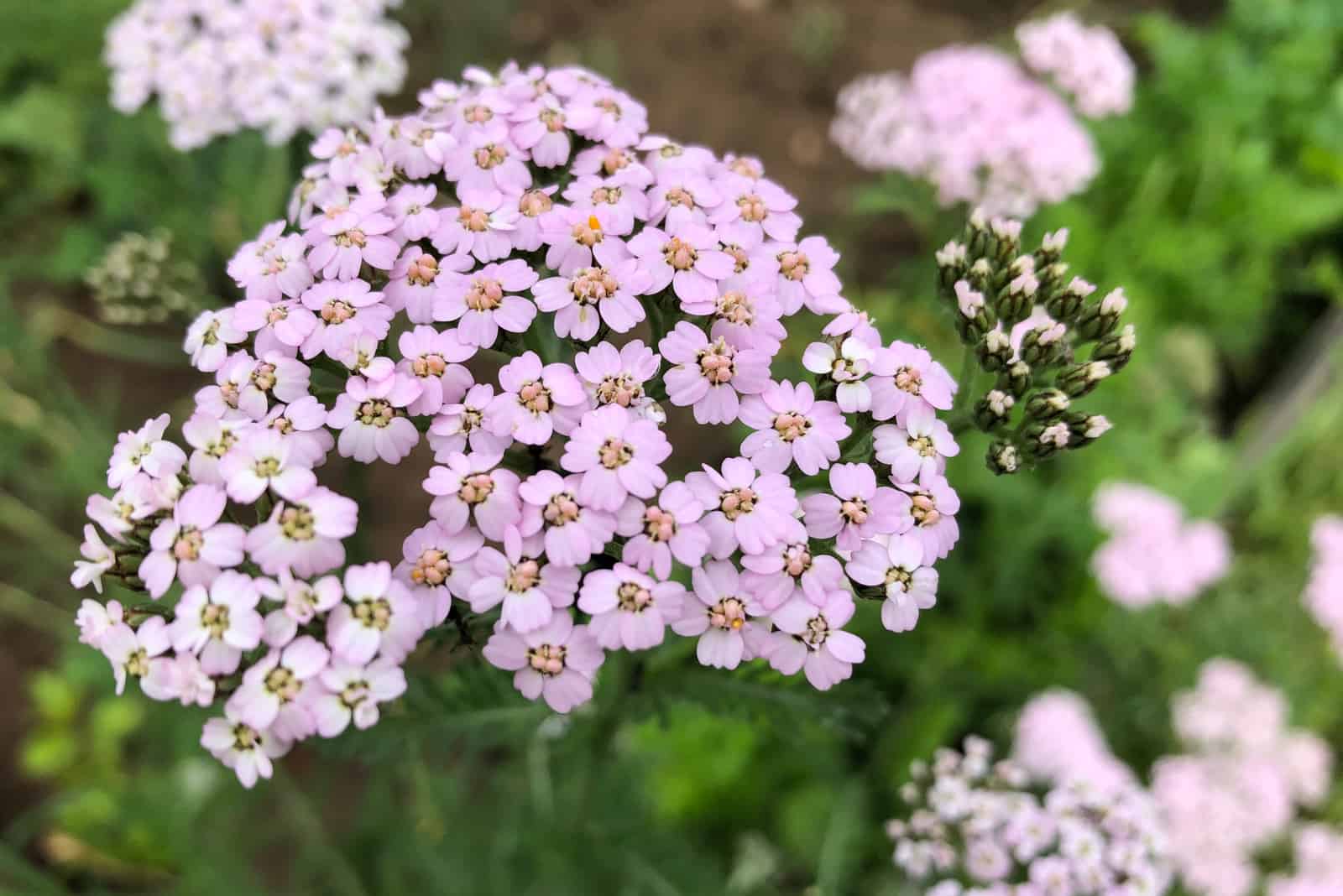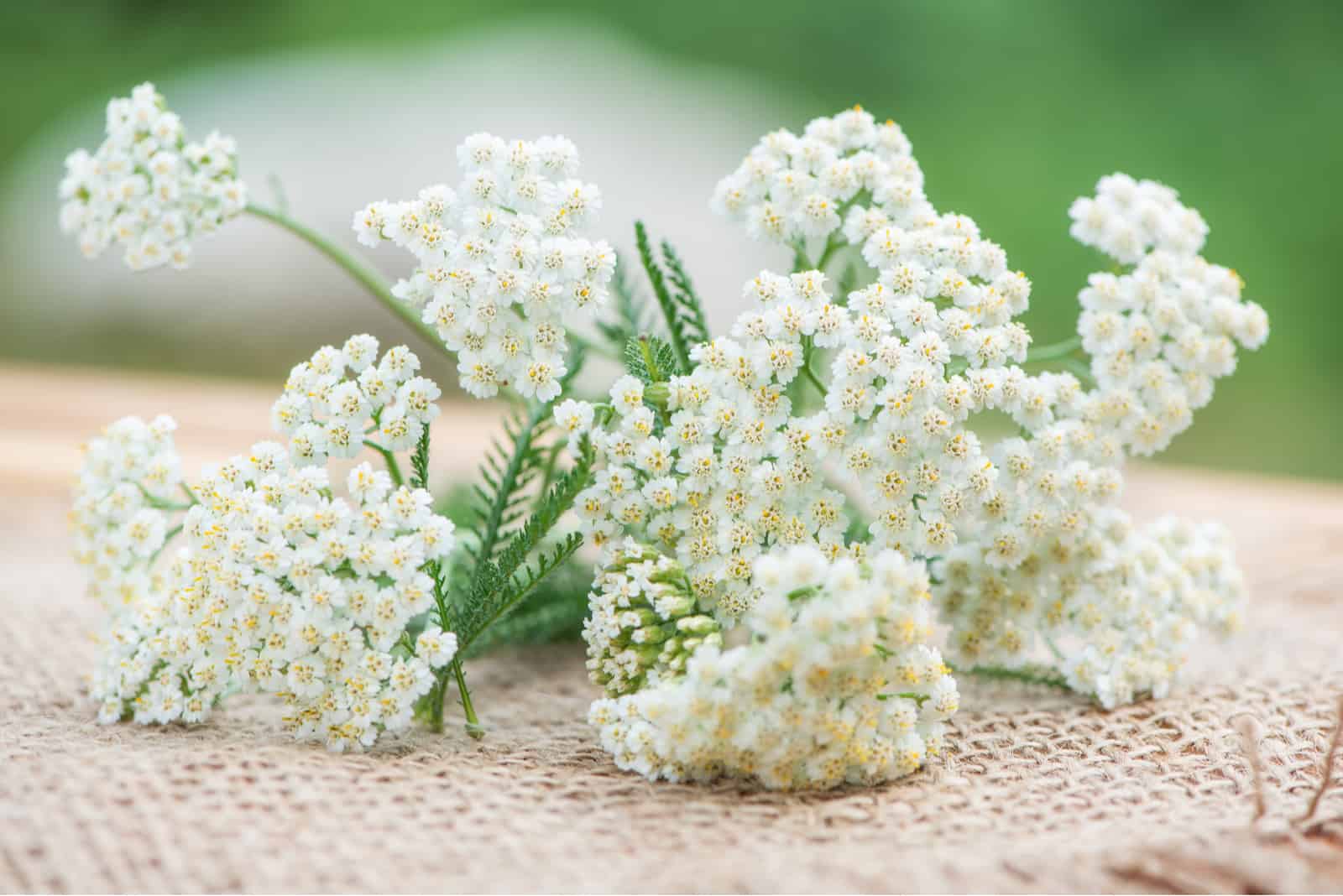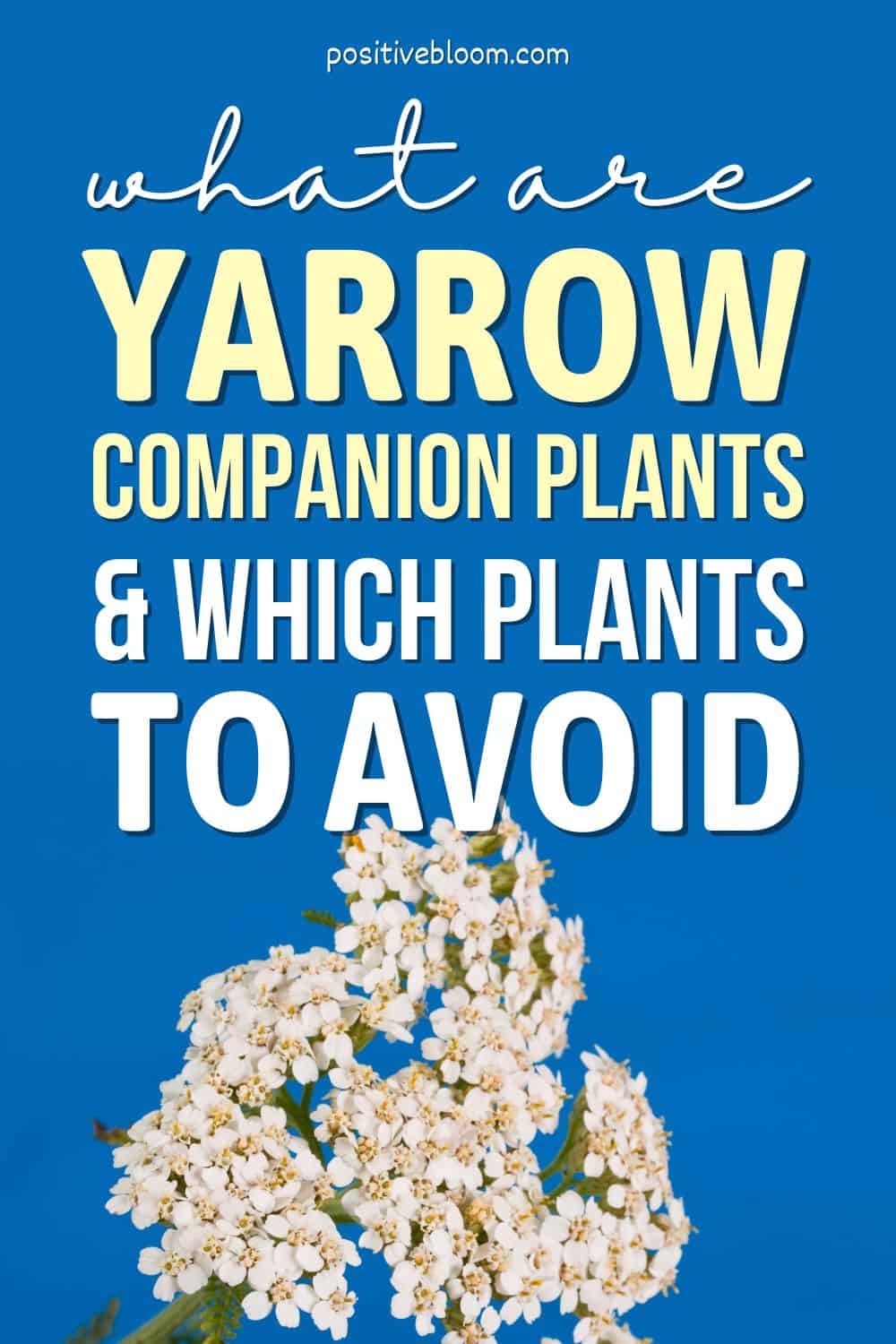I have always wondered why I keep seeing yarrow in random places in many gardens and orchards — cut me some slack, I was just a curious kid back then and didn’t know a thing about yarrow companion plants.
A Yarrow, also called Achillea Millefolium, is a perennial flowering herb that is often used in herbal medicine, but it is also a great companion plant!
Growers tend to plant yarrow together with various fruits, vegetables, and flowering plants as well, which is great because yarrow flowers grow in many different colors, so you can have fun and combine various flowering plants!
Not only are yarrow plants used for ornamental purposes, but they are also good companions because they attract beneficial insects and deter the bad ones.
Read on to find out about yarrow companion plants!
What Are Yarrow Companion Plants?
Common yarrow plants are able to attract beneficial insects and pollinators like hummingbirds, ladybugs, parasitic wasps, hoverflies, and bees, which is why they should be planted near flowering fruits. In addition to that, their scent can deter harmful pests like aphids, and also the secretions from their roots are able to stimulate disease resistance in nearby plants.
So many advantages, no wonder I have seen them almost everywhere!
Some of the plants that should be planted together with Achilles, are tomatoes, apple trees, strawberries, oregano, lavender, basil, broccoli; and also shrubs like evergreen holly or Ilex glabra… the list just goes on and on.
Let’s dive in!
Flowering Fruits & Yarrow Plants
As we have previously mentioned, yarrows attract pollinators that are necessary for the pollination of flowers that are going to eventually grow into fruits.
So, if you want to harvest large fruit batches, you will have to do everything you can to attract those pollinators, especially in areas where bee populations are pretty low.
Sure, you can always pollinate the flowers yourself, but bear in mind that they are very delicate and you can easily destroy them — even if you are being extra careful!
Flowering fruits that go well with yarrow include apple trees, blueberries, strawberries, and similar, fruit-bearing plants.
Brassicas & Yarrow Plants
Plant yarrow amongst your greenery to get a splash of color in your vegetable garden, but also to improve the growth of many of your brassicas plants!
Brassicas are known for being hard to grow because they are susceptible to various pests and diseases, so you should do anything you can to encourage their growth and development.
Yarrows have the ability to deter harmful pests that absolutely love munching on those large green leaves and saps, stealing all the essential nutrients from your veggies!
Asides from that, yarrow tend to grow taller than brassicas, thus, protecting them from direct sun exposure and providing them with shade (any brassica absolutely loves shady areas).
Cauliflower, broccoli, cabbage, brussels sprouts, and kale are all species that are included in the Brassicas genus.
Aromatic Herbs & Yarrow Plants
Being an aromatic herb itself, the yarrow plant works great with lavender, oregano, thyme, basil, and rosemary.
Yarrows are usually planted in poor soil because they add nutrients to the soil, but they can also uptake all the essential nutrients from the soil and then be used as a fertilizer or a compost — another great utilization of yarrow plants!
PLanted next to fellow aromatic herbs, yarrows encourage growth and development by repelling harmful insects, yet not stealing any nutrients from their companions!
For instance, they attract ladybugs that kill aphids — ladybirds tend to invade aromatic herbs and completely destroy them.
Did you know that yarrow is usually put in books to keep insects away? Yeah, I just thought it was because they looked so pretty!
People used to also sow yarrow into their clothes to keep those annoyances away… I guess you can grow yarrows and put them in your closet to protect your suits and dresses.
Veggies & Yarrow Plants
Many vegetables in your garden can benefit from yarrow plants: for instance, tomato plants also require pollination in order to produce tomatoes.
Aside from this, yarrow can also enhance the taste of your fruits and vegetables, and encourage their growth and development — the reason why my garlic onions love hanging out with yarrows!
Other veggies like beans, spinach, onions, and aubergine also benefit from yarrow plants for similar reasons.
Flowering Plants & Yarrow Plants
It is not uncommon to plant certain plants together if you want to achieve a specific style in your garden. For instance, you can plant the Coronation Gold yarrow variety that produces yellow flowers if you want to have a golden garden, or even contrast the cold tones from other flowers.
If you are looking to create the best possible ambience for evenings in your garden, then you should definitely plant the Moonshine yarrow, which produces white flowers — they look great with plants that produce silver foliage and reflect light.
The Rosa Teasing Georgia and Achillea Millefolium “Paprika” make a great combination because this yarrow variety produces red flowers that enhance the soft yellow color of the rose, making it look more prominent and vibrant.
These two beautiful flower plants also have the same bloom time, providing you with an aesthetically pleasing view for a longer period of time.
In all of the above-mentioned flowering plants, the same benefits from yarrow companion planting apply as well: pollination, the attraction of good insects, and deterioration of the bad ones!
What Plants Should Be Avoided Near Yarrow?
Even though we have mentioned many benefits of the yarrow companion plant, unfortunately, there are some drawbacks too.
For instance, yarrows are prone to powdery mildew; and so are cucumbers, zucchinis, and squash varieties. If you put two plants that are susceptible to the same fungus close together, trust me it is about to show up.
It is better to prevent something from happening than to try and fix it later.
Some gardeners also suggest that planting yarrow plants near coneflowers or butterfly weeds is more harmful than beneficial, while other gardeners would not agree.
I personally don’t plant them together, because they need full sun and the tall flower stalks of yarrow would only make unfavorable shades to these plants.
More About Yarrow
As we have previously mentioned, yarrows are also called Achillea Millefolium. There is actually an interesting story behind the name: a botanist called Achilles used the extract from this plant to treat injured soldiers in the battle of Troy.
Millefolium is a Latin word that means thousands of leaves, hence the name Achillea Millefolium. There are also other names for this plant, such as the Nosebleed plant, Thousand-seal, Devil’s nettle, Milofil, Dog daisy, and Soldier’s woundwort.
It originates from North America, Europe, and Asia; and it can grow in USDA Hardiness zones from 3 to 9.
They are low-maintenance and deer-resistant plants that bloom in late spring and continue blooming and developing throughout the growing season.
They produce beautiful flowers in various colors, but the most common ones are white, pink, and yellow flowers. By late summer, the yarrow plant has fully developed and produced many flowers, therefore, your garden will be very colorful and cute, especially if you plant different yarrow varieties!
The important details of a yarrow are summed up in the table below:
[table id=149 /]How To Plant Yarrow
Firstly, yarrow should be planted in either the late spring or early summer. This way, it will have enough time to grow and develop flowers during the growing season. Though some folks tend to plant it in early spring, I would not recommend this because they are not frost-hardy and can be easily damaged by low temperatures.
Now we have determined the appropriate planting period, we are going to determine the best planting spot for your yarrow plant.
Bear in mind that they absolutely love receiving full sun throughout the day (at least 6 hours a day); they tend to grow leggy in shady areas. You should plant them in a well-draining soil that is not constantly moist, the most optimal soil type is loam.
These are the steps that you need to follow:
• Choose the appropriate area for your yarrow plant.
• Loosen up the soil to at least 12 inches deep before planting. You can use either a garden fork or a tiller.
• Mix the top 4 inches with compost to promote growth and development.
• If the soil is rich in nutrients, yarrows tend to grow taller than usual and might require stalking. This is why they prefer growing in poor soil that is mixed with compost.
• Separate the plants to 2 to 4 feet apart. They are fast growers, and soon your garden will be filled with yarrows!
How To Grow Yarrow
Yarrow plants are easy to grow: they are drought-tolerant and love spending time under the full sun. They should receive an inch of water every week, which is often acquired by constant rain.
However, if you live in an area with a dry climate where it does not rain much, I would recommend that you water your yarrow plant at least once a week.
You should also add a thin layer of compost so that it can absorb the essential nutrients needed for growth and flower production. Bear in mind that too much fertilizing might turn this plant into an invasive one, and you don’t want to end up with the entire neighborhood growing yarrows!
What is practiced here is a process known as deadhead — cut flower heads that have started fading in the mid-summer, so that new flowers can emerge!
The plant should be divided every 3 to 5 years to maintain satisfactory health and promote new growth. This is done by lifting the plant and removing any dead or excess stems from the clump, and it is supposed to be done in fall or early spring.
You can use these cuttings to grow a brand new yarrow plant in a different location.
About Pests
Though this plant does not require special care; unfortunately, it is susceptible to some pests and diseases.
Pests that often invade yarrow plants are aphids, spittlebugs, and mealybugs. If you notice any changes or discoloration on foliage and stalks, I suggest that you apply insecticidal soap or neem oil.
Diseases are a more serious issue because the plant is prone to fungal infections. The roots, stems, and leaves can be easily infected, thus spreading the diseases to other parts of the plant, or to nearby plants.
A lack of air circulation and damp conditions can lead to leaf spot, which can be detected by brown spots appearing on the stems and leaves; Botrytis Blight, which is also a fungal infection, has similar symptoms and can affect your plant’s health.
Overwatering can lead to root rot and powdery mildew — powdery mildew can be easily treated with neem oil or fungicide, while root rot is a bit more difficult because it involves taking the plant out of the soil and cutting off any mushy roots.
And lastly, they are also susceptible to rust, which can stop their growth and the development of your yarrow plant.
What Is Yarrow Used For?
If these plants were being used for medical purposes during the battle of Troy, can you imagine how much science has advanced, and what the new purposes of using yarrow in medicine are?
Well, they have advanced A LOT — from being an anti-inflammatory remedy, to regulating blood sugar levels in diabetes and helping with sleep.
For instance, it can be used as an anti-inflammatory remedy that helps to balance the pH of the skin and keep it moisturized. It can also be beneficial in conditions regarding irritable bowel movements in the digestive tract, and as a topical application for skin wounds.
Yarrow can be used to make essential oils that help to reduce anxiety, with a somewhat similar mechanism as the popular anti-anxiety drug called benzodiazepine.
This herb can also be used to stimulate menstruation and improve the immune system.
You can use it to make teas, chew it fresh if you have a toothache, or infuse it in oil to make solutions that can be applied on the skin and to bruises and burned areas.
Yarrow Tea & Essential Oil Recipe
For yarrow tea, you will only need two ingredients: water and yarrow.
Put 1 to 2 tablespoons of dried yarrow flower heads in hot water and let it sit for about 20 minutes.
Making essential oils is a bit more of a challenging task than making yarrow tea, as you need to extract the yarrow from its stems. Here is a video that you can follow to successfully make yarrow essential oils:
I usually make salads with yarrow and bread crumbs — it is so delicious, yet extremely healthy and beneficial.
The point that fascinated me the most is that you can actually make healthy and tasty beer out of yarrow!
Yarrow Side Effects
Just as a prescription drug can have possible side effects, the same applies to natural remedies. Though there are several different potential side effects, the most common ones are increased urination, skin irritation, and drowsiness.
It can cause allergic reactions, especially if you are already allergic to the Asteraceae family. It might even slow down the blood clotting process, which is why it is not recommended to use yarrow before surgery.
It can also interact with other drugs and affect their functions — you shouldn’t use yarrow with sedatives, lithium, antacids, and anticoagulants.
Because yarrow can induce a menstrual cycle, it is not recommended for pregnant women to use it because there is a risk of miscarriage.
Frequently Asked Questions
1. Can yarrow and lavender be planted together?
Yes, yarrow and lavender can and should be planted together, because yarrows attract beneficial insects like ladybugs, which feed on pests that usually invade aromatic herbs like lavender. They don’t steal nutrients from the soil, so there are still plentiful nutrients that lavender can use for its own growth and development.
2. Is yarrow a perennial?
Yarrow is a perennial herb, meaning that its foliage will die in the winter but grow back when the temperature rises. So, you won’t have to worry about planting yarrow seeds every growing season.
3. Does yarrow need to be watered often?
Well, it depends on how you define often — yarrow plants should receive at least an inch of water per week, which means that they can get enough water from the rain. However, if you live in a dry climate, I recommend that you water your yarrow plants at least once a week.
Do not water it frequently as this will lead to root rot, and yarrow plants don’t like being in moist or damp soil either.
4. Does yarrow grow well with roses?
Yes, they do. They are kind of a perfect match because both can tolerate being exposed to the full sun, and roses will absorb most of the water from the soil, which makes it ideal as yarrow doesn’t like moist soil.
They are grown together primarily for ornamental purposes because you can combine different colors of both flowering plants and achieve a colorful garden, or you can have a monochrome garden.
To Sum Up
I think we can apply the famous quote “surround yourself with good people” in terms of gardening because it is very important to know which plants are good companions and which should be avoided planting as neighbors.
Your plant can benefit a lot from its companion, but it can also suffer.
Yarrows are good companion plants because they attract a lot of good insects and deter the bad ones, and they also don’t steal any nutrients from the soil, so there is enough for everyone!
Yarrow plants should grow together with flowering plants like strawberries and apples, but also with other herbs like lavender or oregano. They also work well with other veggies like brassicas, tomatoes, and garlic onions.
Avoid planting them near squash and cucumbers, because they are also susceptible to powdery mildew, so you kind of make a double trouble situation.
I wish you all the best.
If you have just begun practicing companion planting, then check out what are the nasturtium companion plants, and what plants to avoid!
Until next time!
Like this post? Share or pin it for later!

